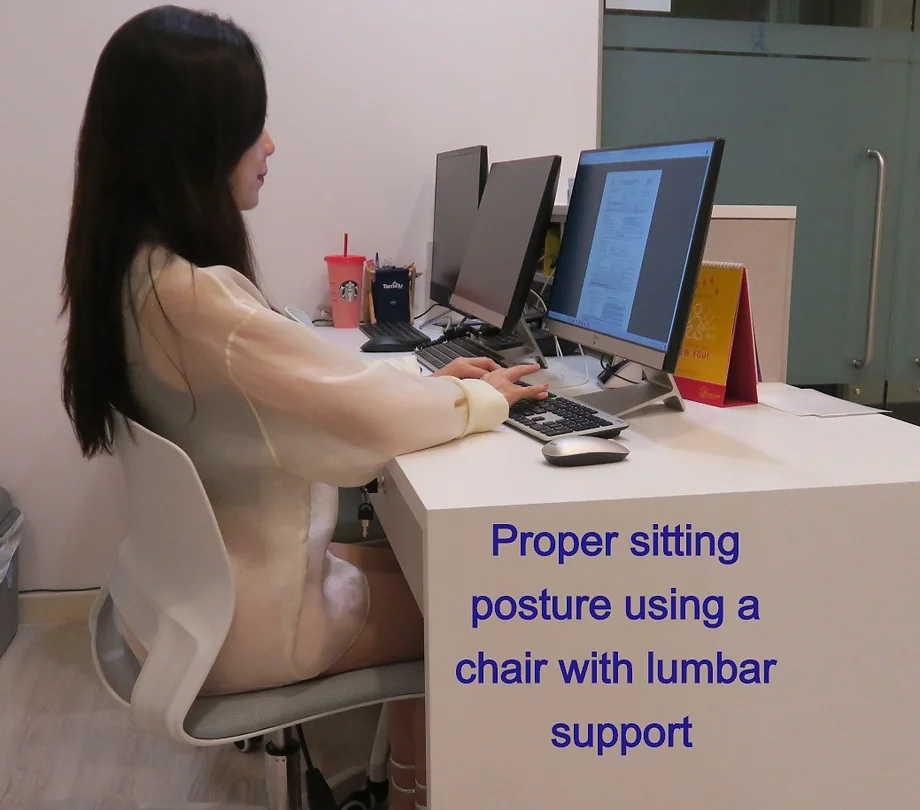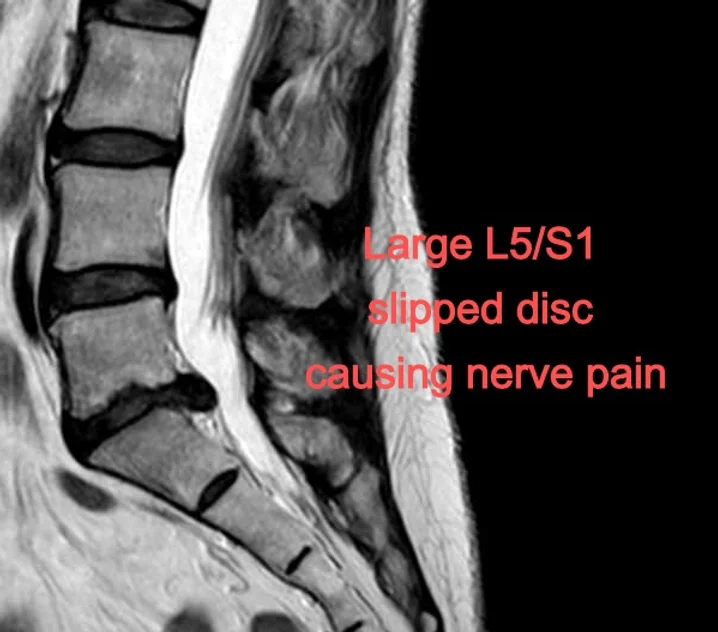Back and Neck Specialist Services in Singapore

The spine, a complex structure of bones (vertebrae), cushions (discs), and joints (facet joints), bears the weight of our body throughout our lives, making it susceptible to degeneration and pain. Back and neck problems are very common. It has been estimated that up to 80% of adults may experience back pain at some point in their lives.
Common back and neck conditions include slipped discs, spinal stenosis, and sciatica, each causing discomfort and impacting daily life. Given the intricate nature of the spine and the variety of potential issues, seeking help from a qualified professional is essential.
Consulting a spine specialist or back pain specialist in Singapore could potentially provide more accurate diagnosis and effective treatment. These healthcare professionals can identify the root cause of your pain and develop a personalised plan to address your specific needs.
Whether through conservative methods, injection treatments, or surgical intervention, seeking proper medical care can significantly improve your quality of life and facilitate a return to pain-free movement. Don't let lower back or neck pain hold you back — reach out to a spine specialist and take the first step towards recovery.

When to See a Spine Specialist
Knowing when to seek professional help for your back or neck pain is crucial. Early intervention could prevent further complications and potentially improve treatment outcomes. Here are some common symptoms that warrant a visit to a spine doctor or back pain specialist:
- Persistent back or neck pain despite rest.
- Radiating pain, numbness, or weakness in arms or legs.
- Pain caused by a traumatic injury.
- Difficulty controlling bowel or bladder movements.
- Unexplained weight loss or fever with back pain.

Conditions Treated by Spine Specialists
Spine specialists, including spine surgeons and lower back pain specialists, are trained to diagnose and treat a wide range of conditions affecting the spine. These conditions can cause pain, numbness, weakness, and limited mobility. Here are some of the common conditions that spine specialists treat:
Slipped Disc
Slipped disc is a condition where the disc in between the bones slips out of its normal position and presses on a nerve. This causes severe pain running down the arm or the leg. Slipped discs can happen acutely or progressively over time, and may cause varying degrees of pain. Many cases can be successfully treated with medications and physiotherapy. However, spine surgeons may recommend a Microdiscectomy surgery for patients with severe pain or persistent pain. This surgery involves the removal of the portion of the disc pressing on the nerve to address the pain.
Spinal Stenosis
Spinal stenosis is a condition characterised by the narrowing of the spinal canal, which is the space that houses the spinal cord and nerves. This narrowing can put pressure on the spinal cord and nerves, leading to symptoms such as pain, numbness, tingling, and weakness in the back, legs, and arms. Spinal stenosis often occurs due to age-related degenerative changes in the spine, such as bone spurs and thickened ligaments.
Sciatica
Sciatica refers to pain that radiates along the path of the sciatic nerve, which runs from the lower back through the hips and buttocks and down each leg. This pain is typically caused by compression or irritation of the spinal nerve root, often due to a herniated disc, spinal stenosis, or piriformis syndrome (a condition involving a muscle in the buttocks). Sciatica usually affects only one side of the body and can range from mild to severe.
Spinal Tumours and Infections
Spinal tumours are abnormal growths that can develop within the bones of the spine, the spinal cord, or the surrounding tissues. While most spinal tumours are benign (non-cancerous), some can be malignant (cancerous) and require more aggressive treatment. Spinal infections can occur when bacteria or other microorganisms invade the spinal tissues, leading to inflammation and back pain.
Spondylolisthesis
Spondylolisthesis is a condition where one vertebra slips forward over the vertebra below it. This can occur due to a defect or fracture in the small bony segment connecting the upper and lower facet joints. Spondylolisthesis can cause back pain, stiffness, and muscle spasms, and in severe cases, may lead to compression of the spinal cord or nerves.
Degenerative Spine Conditions
Spinal degenerative problems encompass a range of conditions that affect the spine’s structure and function over time. These include scoliosis, osteoarthritis, degenerative disc disease, facet arthrosis, and spinal stenosis. These conditions often develop with age, leading to pain, stiffness, and reduced mobility. They can be caused by a combination of factors, including genetics, lifestyle, and previous injuries.

Diagnosis of Spine Conditions
Diagnosing spine conditions accurately is crucial for effective treatment. Spine specialists, such as spine surgeons and spine doctors, utilise a combination of physical examinations, medical history reviews, and advanced imaging techniques to evaluate your condition and determine the best course of action. The choice of diagnostic tests depends on your specific symptoms and suspected condition.
Here are some common imaging techniques used in spine diagnosis:
X-rays:
X-rays are a standard initial imaging test to visualise the bones in your spine. They can help identify fractures, dislocations, and degenerative changes in the spine.
MRI:
Magnetic resonance imaging (MRI) provides detailed images of soft tissues, including the intervertebral discs, spinal cord, and nerves. MRI is particularly useful for diagnosing disc herniations, spinal stenosis, and tumours.
CT Scans:
Computed tomography (CT) scans create detailed 3D images of the bone structure in your spine. They are often used for surgical planning, especially in complex cases involving fractures or spinal deformities.
Non-Surgical Spine Treatments
When it comes to back pain treatment, especially for lower back pain treatment in Singapore, non-surgical options are often the first line of defence. They may be used for various conditions, including disc herniation, spinal stenosis, and general back pain. These treatments aim to provide some level of relief, improve function, and promote healing without the need for surgery:
Physiotherapy
Physiotherapy is a cornerstone of non-surgical back pain treatment. It typically involves targeted exercises and manual therapy techniques to strengthen muscles, improve flexibility, and restore proper spinal alignment. Common approaches include core strengthening to support the spine, traction to relieve pressure on nerves, and nerve stretches to reduce pain and improve mobility. Yoga and pilates do utilise postures that focus on building back muscles and are a good adjunct to physiotherapy.
Spinal injections
Spinal injections deliver medications directly to the affected area of the spine. These injections can provide back pain relief and reduce inflammation. Different types of injections are available, including steroid injections, facet joint injections, nerve blocks, Laser treatments, and Radio Frequency Ablation treatments. Your doctor will determine the most appropriate injection based on your specific condition.
Medications
Various medications could help manage back pain. For example, over-the-counter pain relievers and anti-inflammatory drugs can provide short-term relief. In some cases, your doctor may prescribe stronger medications, such as muscle relaxants or opioids, for more severe pain. When it comes to medications for back pain, it’s essential to use medications as directed and discuss any side effects with your healthcare provider.
Lifestyle modifications
Simple lifestyle changes can significantly impact your back health. For instance, maintaining good posture while sitting at the desk, practising proper ergonomics at work and home, and engaging in regular low-impact exercises can help prevent and manage back pain. Similarly, losing weight if you’re overweight or obese could also reduce stress on your spine.
Advanced Surgical Solutions
When non-surgical treatments are unable to provide relief, or in cases of severe spinal conditions, surgery may be necessary. A spine surgeon will carefully evaluate your condition and recommend the most appropriate surgical approach. While surgery may sound daunting to some, it is often the most definitive and long-term treatment for many degenerative and progressive spinal conditions. Surgery is generally recommended for severe cases of nerve compression, spinal deformities, or instability. Here are some common surgical procedures:
Microdiscectomy
Microdiscectomy is a minimally invasive procedure designed to remove a portion of a herniated disc that is compressing a nerve root. This surgery is performed through a small incision, using a microscope to magnify the surgical field. The improvement in pain following microdiscectomy can be dramatic, with many patients reporting significant relief from sciatica within just a few days after surgery.
Spinal Fusion
Spinal fusion is a surgical procedure that joins two or more vertebrae together to stabilise the spine. This is often achieved using screws, rods, and cages to promote bone growth between the vertebrae. Spinal fusion is considered a definitive, effective, and long-term treatment for many conditions, including spinal degeneration, instability, deformities, and fractures.
Artificial Disc Replacement (ADR)
Artificial disc replacement (ADR) is a motion-preserving alternative to spinal fusion. In ADR, the damaged disc is replaced with an artificial implant that allows for more natural movement. ADR is typically considered for cervical or lumbar discs and, while not a total spine replacement surgery, can help maintain flexibility in the spine.
Minimally Invasive Spine Surgery (MISS)
Minimally invasive spine surgery (MISS) includes a range of techniques designed to minimise tissue disruption and reduce scarring. These procedures typically involve smaller incisions and specialised instruments. While not all spine surgeries are suitable for MISS, it often offers benefits such as faster recovery, reduced risk of complications, and less post-operative pain compared to traditional open surgery. MISS techniques are commonly utilised in procedures like microdiscectomy.

Back and Neck Pain Management
In lower and upper back pain recovery, proactive management is essential. Chronic back and neck pain can severely affect your daily life, but by taking the right steps and adopting the right mindset, you can find back pain relief and improve your quality of life. Whether you’re seeking to enhance your lower back pain recovery or prevent future issues, here are some management methods that are often prescribed at most back pain clinics:
- Regular exercise and core strengthening.
- Ergonomic adjustments for work and daily life.
- Weight management to reduce spinal strain.
- Stress reduction techniques like yoga or pilates.
Frequently Asked Questions About Spine and Back Pain Treatment
What is the cost of spine surgery in Singapore?
The cost of spine surgery can vary widely depending on several factors, including the complexity of the procedure, the type of hospital (public or private), the need for implants, and the length of hospital stay. Singapore’s Ministry of Health provides fee benchmarks for major spine surgeries on its website. For a personalised cost estimate, consult our spine or lower back pain specialist. We will assess your condition, recommend an appropriate treatment plan, and provide guidance on financial considerations and insurance coverage.
How long does recovery from spine surgery take?
Recovery time after spine surgery is highly variable. A microdiscectomy surgery may allow a return to normal activities within weeks, while fusion surgeries could take several months for recovery. Your overall health and adherence to post-operative physiotherapy and rehabilitation also influence the recovery time. Our spine specialist will tailor a recovery plan to help you regain strength and mobility.
Can I avoid surgery for a slipped disc?
It depends on your condition and needs. Conservative treatments like pain medication, anti-inflammatories, steroid injections, and physiotherapy may be effective for many individuals. However, cases of persistent sciatica pain over many weeks or severe debilitating pain will benefit from microdiscectomy surgery. Our spine specialist (lower back pain specialist) will be able to discuss the pros and cons of conservative and surgical treatment for slipped discs.
How do I know if my back pain is serious?
While most back pain resolves independently, seek immediate medical assistance if you experience severe pain worsening over time, numbness or tingling in the legs or feet, leg weakness, loss of bowel or bladder control, or pain accompanied by fever or unexplained weight loss. These could indicate a serious condition requiring one to see a spine specialist or lower back pain specialist.
Is spine surgery Medisave or insurance claimable?
Generally, the cost of spine surgery is claimable under Medisave and most hospital insurance policies in Singapore. However, the amount of coverage varies depending on the procedure, hospital type and ward class, and your policy’s terms. Following assessment by our spine specialist, our centre can assist you with the Pre-Authorisation process, which is the process to check with your insurer on coverage and the estimated out-of-pocket expenses.
Contact Us
For expert guidance and personalized care, reach out to us—your first step towards a pain-free life with Centurion Orthopaedic Centre.
38 Irrawaddy Rd, #07-40 Mount Elizabeth Novena Hospital Specialist Centre, Novena, Singapore 329563
We are a 3-min walk from Novena MRT Station. Take Exit A from the station.
WhatsApp to book Appointment:
+65 9623 7153 1 Farrer Park Station Road, #14-09/10 Connexion, Singapore 217562
WhatsApp to book Appointment:
+65 9723 3741 Contact Information
38 Irrawaddy Rd, #07-40 Mount Elizabeth Novena Hospital Specialist Centre, Novena, Singapore 329563
We are a 3-min walk from Novena MRT Station. Take Exit A from the station.
Opening Hours
Mon-Fri: 9am to 6pm
Sat: 9am to 1pm
Emergency consults, Call/Text/WhatsApp: 9623 7153
Please submit your inquiry in English or Mandarin using the form below. We will respond to your query as soon as possible.

Services
Medisave / Insurances
Treatments
Ankle Sprain & Treatment
Cartilage Repair Treatment
Bone Fracture Treatment
Alternatives to Knee Replacement
Knee Replacement Surgery
ACL Reconstruction Surgery
Knee Cartilage/Meniscus Tear Injury
Heel Spur Treatment
Hip Replacement Surgery
Hip Scope Surgery
Shoulder Scope Surgery
Ankle Ligament Surgery
Spinal Injection Therapy
Steroid Injection
Patient Resources


